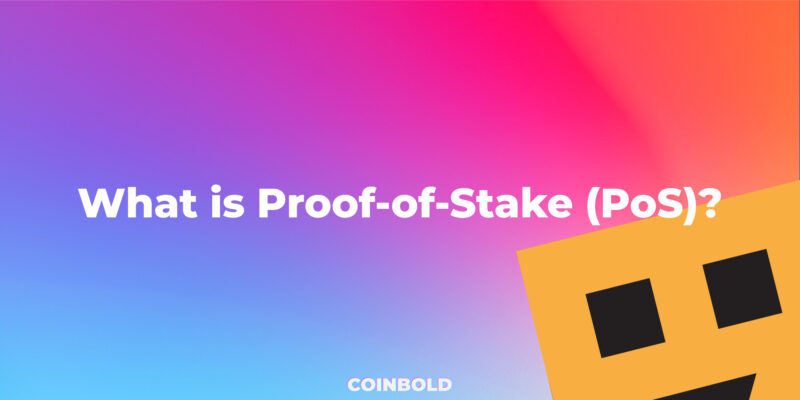Proof-of-Stake (PoS) has become one of the most talked about consensus mechanisms disrupting the world of cryptocurrency and blockchain technology. As concerns around the energy usage and security of the original Proof-of-Work (PoW) mechanism grow, PoS offers an intriguing alternative. PoS aims to provide a more efficient, eco-friendly, and secure approach to validating transactions and achieving agreement on blockchain networks.
With major cryptocurrencies like Ethereum transitioning to PoS in recent years, understanding this next-generation consensus model is important for anyone interested in crypto’s evolution.

This article will provide an in-depth look at how Proof-of-Stake (PoS) functions, its prominent advantages and disadvantages compared to PoW, what cryptos currently use it, and what the future may hold for this pioneering protocol.
By exploring the fundamentals of PoS, we can gain a better perspective on the coming era it promises to usher in for decentralized blockchain networks.
What is Proof-of-Stake (PoS)
One of the consensus mechanisms used in blockchain is proof-of-stake (PoS). Proof-of-stake is a way to prove that validators have put something of value into the network that can be destroyed if they act dishonestly. In Ethereum’s proof-of-stake, validators explicitly stake capital in the form of ETH into a smart contract on Ethereum. The validator is then responsible for checking that new blocks propagated over the network are valid and occasionally creating and propagating new blocks themselves.
Proof-of-stake reduces the amount of computational work needed to verify blocks and transactions. Under proof-of-work, hefty computing requirements kept the blockchain secure. Proof-of-stake changes the way blocks are verified using the machines of coin owners, so there doesn’t need to be as much computational work done. The owners offer their coins as collateral—staking—for the chance to validate blocks and earn rewards. Validators are selected randomly to confirm transactions and validate block information.
Proof-of-stake is seen as less risky regarding the potential for an attack on the network, as it structures compensation in a way that makes an attack less advantageous. The next block writer on the blockchain is selected at random, with higher odds being assigned to nodes with larger stake positions.
How Proof-of-Stake (PoS) work
Proof-of-stake makes it easier to confirm transactions and create blocks without requiring a lot of computer power. Unlike proof-of-work, where computers do a lot of work, proof-of-stake lets coin owners use their machines to verify blocks with less effort. They offer their coins as a pledge (staking) to verify blocks and earn rewards.

In this system, validators are chosen randomly to approve transactions and validate block details. It’s a fairer method compared to proof-of-work, which relies on competition for rewards.
To become a validator, a coin owner needs to ‘stake‘ a specific amount of coins. For example, Ethereum requires staking 32 ETH to run a node.
Blocks are confirmed by multiple validators, and when enough validators agree on the accuracy of a block, it’s considered final.
To be a validator, you usually need to stake a significant amount of cryptocurrency, like 32 ETH for Ethereum. However, there are ways to join a group of validators, known as a validation pool, without staking a large amount yourself. This is called ‘liquid staking.’
Different proof-of-stake systems might have their own ways of reaching an agreement. For instance, in Ethereum’s upcoming update called sharding, a smaller group of validators (a ‘committee‘) verifies transactions and adds them to a shard block, making the process more efficient.
Proof-of-Stake (PoS) Advantages and Challenges
Proof-of-Stake (PoS) Advantages
Participation Accessibility and Decentralization:
Staking makes it easier for individuals to participate in securing the network, fostering decentralization. Validators in a PoS system can run on regular computers like laptops, reducing the entry barrier for participation.
Example: Consider a blockchain where users can stake a smaller amount of their cryptocurrency holdings, enabling broader community involvement in the consensus process, ultimately promoting a more decentralized network.
Staking Pools for Flexibility:
Staking pools provide a flexible option for users to participate in staking without needing the full stake requirement (e.g., 32 ETH) to run their own validator node. This promotes inclusivity and allows for a broader audience to participate in the network.
Example: Imagine a scenario where a group of individuals pools their tokens to meet the minimum stake requirement, collectively running a validator node and sharing the rewards accordingly, making staking accessible to smaller token holders.
Increased Security with Economic Incentives:
PoS offers greater crypto-economic security compared to PoW. Validators are financially incentivized to act in the best interest of the network, as they risk losing their staked coins if they validate malicious transactions, enhancing the overall security of the blockchain.
Example: In a PoS network, if a validator tries to validate fraudulent transactions, they stand to lose a significant portion of their staked tokens, incentivizing them to maintain the network’s integrity.
Efficiency and Reduced Energy Consumption:
PoS eliminates the need for energy-intensive mining operations, making it more energy-efficient and environmentally friendly. This reduction in energy consumption contributes to a greener and sustainable blockchain ecosystem.
Example: Consider a blockchain where transactions are validated through staking, requiring significantly less computational power and energy compared to PoW mining, thus reducing the overall carbon footprint of the network.
Economic Issuance Efficiency:
PoS generally requires less issuance of new tokens to incentivize network participants, contributing to a more controlled and predictable economic model. This can lead to greater stability and sustainability in the long run.
Example: In a PoS system, the network can achieve consensus with a lower issuance of new coins, aligning with a balanced approach that maintains network security while mitigating inflationary pressures.
Proof-of-Stake (PoS) Challenges
Maturity and Battle-Testing:
PoS is relatively younger and less battle-tested compared to PoW. This implies that potential vulnerabilities or issues may not have been discovered yet, making it important to exercise caution in its implementation and usage.
Example: A newly launched blockchain utilizing PoS may face unforeseen challenges or security issues that have not yet been identified due to its limited historical track record.
Complex Implementation:
Implementing PoS can be more complex compared to PoW. The design and implementation of a robust PoS system require careful consideration of various factors, including economic incentives, consensus protocols, and validator selection algorithms.
Example: Developing a PoS blockchain requires intricate programming and algorithmic solutions to ensure the integrity and fairness of the consensus process, posing challenges for development teams.
Software Requirements for Participation:
Users interested in participating in Ethereum’s PoS need to run three separate pieces of software, which can be cumbersome and less user-friendly compared to simpler PoW setups.
Example: Ethereum’s transition to PoS requires users to run multiple software components, including an Ethereum client, a validator client, and an Ethereum 2.0 deposit contract, increasing the complexity of participation.
Pros and Cons
| Pros | Cons |
|---|---|
| Staking makes it easier for individuals to participate in securing the network, promoting decentralization. validator node can be run on a normal laptop. Staking pools allow users to stake without having 32 ETH. | Proof-of-stake is younger and less battle-tested compared to proof-of-work |
| Staking is more decentralized. Economies of scale do not apply in the same way that they do for PoW mining. | Proof-of-stake is more complex to implement than proof-of-work |
| Proof-of-stake offers greater crypto-economic security than proof-of-work | Users need to run three pieces of software to participate in Ethereum’s proof-of-stake. |
| Less issuance of new ETH is required to incentivize network participants |
Proof-of-Stake (PoS) vs Proof-of-Work (PoW)

Differences between Proof of Stake (PoS) and Proof of Work (PoW)
Both PoS and PoW are methods to ensure blockchains have accurate information and process transactions correctly. They both do a good job, but they operate in different ways.
In PoS, the individuals who create the blocks are called validators. They check transactions, verify events, vote on decisions, and maintain records. In PoW, the block creators are known as miners. Miners solve complex mathematical problems to validate transactions and receive coins as rewards for their efforts.
To become a block creator in PoS, you need to possess a certain amount of coins or tokens. In PoW, you need to invest in powerful computers and pay for substantial electricity to solve the complex math problems.
The computers and electricity required for PoW are costly, making it challenging for many people to become miners. This high cost enhances the security of the blockchain. On the other hand, PoS utilizes less computer power to validate blocks and transactions. It also eliminates the rewards that PoW provides to miners.
| Proof-of-Stake (PoS) | Proof-of-Work (PoW) |
| Block creators are called validators | Block creators are called miners |
| Participants must own coins or tokens to become a validator | Participants must buy equipment and energy to become a miner |
| Energy efficient | Not energy efficient |
| Security through community control | Robust security due to expensive upfront requirement |
| Validators receive transaction fees | Miners receive block rewards |
Proof of Stake (PoS) is like owning a piece of the action. Imagine you have tokens for a board game, and the more tokens you have, the more important decisions you get to make in the game. On the other hand, Proof of Work (PoW) is like solving a really tough puzzle to earn your role in the game.
In PoS, it’s like being a part of a community where everyone’s opinions matter. The more tokens you have, the more say you have in the decisions the community makes. PoW, on the other hand, is like an exclusive club where you need to pay a hefty membership fee (in terms of equipment and energy) to get in. Think of PoS as being eco-friendly, like using solar power to run your house, while PoW is like using a gas-guzzling generator. PoS is efficient and easy on the environment. However, PoW, while not environmentally friendly, ensures top-notch security because it’s like putting a strong lock on the door that only opens with an expensive key.
In PoS, you get rewarded for being a responsible and contributing member of the community. It’s like getting a thank-you card when you help organize a party. In PoW, you’re more like a miner digging for gold – when you strike gold (solve a complex problem), you get a chunk of it as a reward.
Comparison to Proof-of-Work (PoW)
Ethereum used to rely on proof-of-work when it started, but things changed in September 2022. The change was to a better system called proof-of-stake, which brought several advantages over the old way:
Less Energy Needed
Proof-of-stake uses way less energy than proof-of-work. There’s no need to use huge amounts of power for complex computations like before.
Easier for Everyone to Join
You don’t need super expensive, top-notch hardware to create new blocks. It’s more open to anyone with a regular computer.
More Secure from Centralization
The new system makes it harder for a single powerful entity to control and dominate the network, making it more secure.
Less New Currency Issued
Using less energy means less need to create new coins to reward people for participating, making the economic side of things more efficient.
Bigger Cost for Attacks
If someone tries a big attack (like taking control of 51% of the network), it’s more expensive and harder for them to succeed, which adds another layer of security.
Community Can Help if Needed
If there’s a major attack, the community can come together and recover the network in a fair way, adding a safety net for everyone involved.
This new proof-of-stake system has made Ethereum more efficient, secure, and fair for everyone participating.
Project that uses Proof-Of-Stake consensus mechanism
- Ethereum: Ethereum is the second-largest cryptocurrency by market capitalization and the most widely used platform for decentralized applications (dApps) and smart contracts. Ethereum is currently transitioning from proof of work to proof of stake in a process called The Merge, which is expected to happen in the first half of 2022. Ethereum’s proof of stake mechanism is called Casper, and it requires validators to stake 32 ETH into a smart contract on Ethereum. Validators are then randomly selected to propose and attest to new blocks, and they receive rewards or penalties based on their performance. Ethereum’s proof of stake aims to improve the security, scalability, and sustainability of the network.
- Tezos: Tezos is a self-amending blockchain that allows users to propose and vote on protocol upgrades without the need for hard forks. Tezos uses a variation of proof of stake called liquid proof of stake, which allows any user who owns at least one tez (the native token of Tezos) to delegate their stake to a validator (called a baker) without giving up their ownership or voting rights. Bakers are randomly chosen to create new blocks and receive rewards based on the amount of tez they have staked or delegated. Tezos claims that its proof of stake mechanism is more energy-efficient, secure, and democratic than proof of work.
- Cardano: Cardano is a blockchain platform that aims to provide a more scalable, interoperable, and sustainable foundation for dApps, smart contracts, and digital identity. Cardano uses a variation of proof of stake called Ouroboros, which divides time into epochs and slots, and elects a slot leader for each slot based on a random lottery. Slot leaders are responsible for creating new blocks and broadcasting them to the network. Anyone who owns ada (the native token of Cardano) can participate in the lottery by either staking their ada directly or delegating it to a stake pool operator. Cardano’s proof of stake mechanism is designed to be more secure, fair, and decentralized than proof of work.
History and Evolution of Proof-of-Stake
In 2013, Peercoin pioneered the integration of Proof of Stake alongside the traditional Proof of Work (PoW) in the realm of cryptocurrencies.
Blackcoin stands out as a quintessential example of a pure proof of stake protocol, devoid of mining activity. It was initially introduced by NXT on November 24, 2013. However, an equally notable mention is Blackcoin, released shortly thereafter, characterized by a simpler protocol and a more equitable initial distribution phase.
Following the advent of Blackcoin, the Proof of Stake (PoS) protocol underwent multiple refinements and enhancements. For instance, Bitshares was a trailblazer in implementing Delegated Proof of Stake (DPoS). More recently, Ethereum (ETH) has embraced PoS, marking a significant advancement. Ethereum transitioned to its proof-of-stake mechanism in 2022 due to its heightened security, reduced energy consumption, and superior compatibility for implementing progressive scaling solutions, in contrast to the earlier proof-of-work architecture.
Proof-of-Stake (PoS) Goal
Proof-of-stake is a way to make blockchains work better and be more eco-friendly compared to the competitive and energy-hungry proof-of-work (PoW) method. In PoW, people compete to confirm transactions, and this competition can lead to a lot of energy usage.
When people mine Bitcoin using PoW, they earn Bitcoin as a reward, but they spend a lot of regular money on things like electricity and rent for their mining equipment. So, in reality, they’re trading energy for cryptocurrency. This high energy use in PoW is as much as what some small countries consume.
PoS helps by changing the rules. Instead of using lots of energy to compete, you just need to show that you own some cryptocurrency (staking). The network then randomly picks people to create new blocks. This switch means much less energy is used because you don’t need powerful machines and huge amounts of electricity to compete. For instance, Ethereum made this change and cut its energy use by almost 99.84%.
Summary
In summary, Proof of Stake (PoS) presents a promising alternative to the traditional Proof of Work (PoW) consensus mechanism, offering several notable advantages. PoS allows for more accessible and decentralized participation, as users can validate transactions and create blocks without the need for expensive mining equipment. Staking pools further enhance inclusivity by enabling users to pool their holdings and participate in consensus without having the full staking requirement. This approach significantly reduces the energy consumption associated with blockchain operations, contributing to a more sustainable and environmentally friendly ecosystem.
Moreover, PoS enhances security by aligning economic incentives with network integrity, promoting responsible validation. It requires fewer new token issuances, promoting economic efficiency and stability. However, the relative youthfulness of PoS and its complexity in implementation are important considerations, necessitating thorough testing and careful development to ensure its security and reliability in the long run. Despite these challenges, PoS stands as a promising step towards a more efficient, eco-friendly, and inclusive blockchain landscape.








